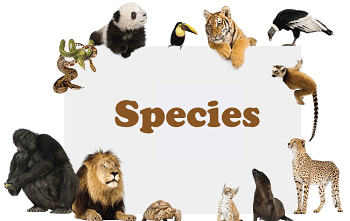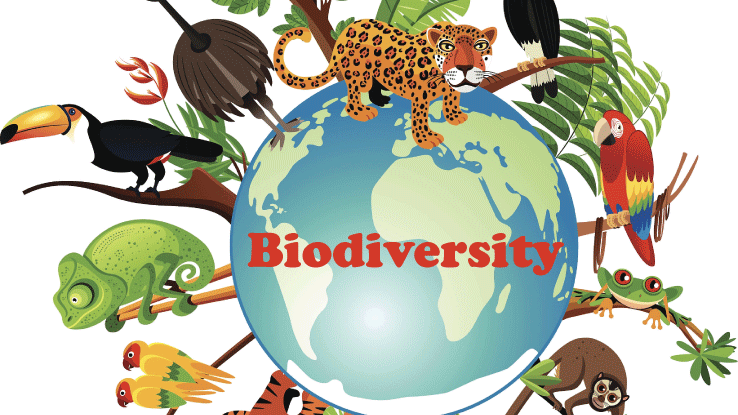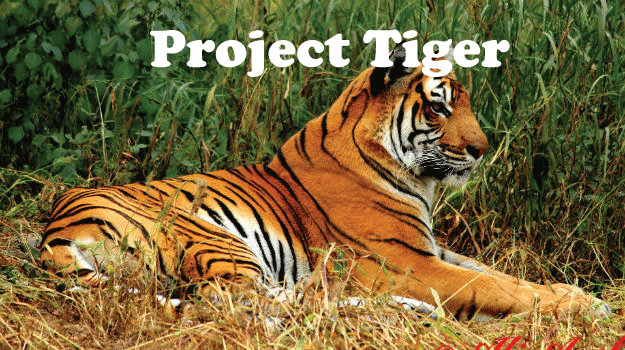Species DefinitionIn Biology, Species is a term used to describe organisms with similar characteristics and common traits which can interbreed. The concept of biological species is extensively used in the fields of biology and related disciplines of research. There are over 20 concepts of species, however. There are a few examples, such as the ecological species concept, which defines species as a group of organisms defined in terms of the resource they rely on (in the sense of the ecological niche they inhabit) and the concept of genetic diversity that considers all living things that can inherit traits from one another in the same gene pool as well as the degree of genetic differences between different populations of the species. Similar to the biological concept, the genetic concept considers the individuals capable of interbreeding in addition to the amount of genetic variation between the populations of the species. However, it can also serve to determine the date of the species origin. The concept of species is rooted in taxonomy. The species is the primary classification unit that is recognized by the International Commission of Zoological Nomenclature. Every species is given an unambiguous two-part name that includes the genus and the species. The genus can be described as a generic term for closely related species. The grey wolf, for instance, can be classified under Canis Lupus. It is also close to the coyote that is found within North America and designated as Canis latrans, with their relationship being identified by the same genus name: Canis. In the same way, genera with common traits (or features) are placed in the same taxonomic group, and similar families will be placed together in the same class. Related orders are put within the same class, and the related classes are included within the same phylum. This categorizing system applies to all species of animals and plants as first proposed by Swedish naturalist Carolus Linnaeus during the 18th century. Organisms are classified into groups based on their external or morphological similarities, but what is more crucial in separating species that reproduce sexually is the species' capacity to successfully interbreed. A single species are able to mate and create viable offspring but rarely with different species. Different species have been found to create hybrid offspring (for instance, the donkey and the horse creating the Mule). However, since the offspring are generally not viable or sterile, interbreeding isn't considered to be successful. Interbreeding is only allowed within the species. It is vital to evolution, as individuals from one species have a common gene pool, whereas people from different species don't. Within a single gene pool, there will always be some variation between individuals. Those who have genetic differences that put them at a disadvantage within an environment are likely to be eliminated in favour of those with beneficial variations. Natural selection leads to the genetic pool evolving to the point that advantageous variations become the norm. Since genetic differences originate within the individuals of a species, and the individuals who carry on their genetic variations do so only within the species, then this is an evolution occurring at the species level. The process of evolving a species to another is known as speciation. 
SpeciationSubspecies are groups that have reached the initial stage of speciation. Individuals of diverse subspecies may interbreed; however, they also produce a lot of male offspring that are sterile. In the next stage, there are Semispecies, or species that are incipient, which are the ones that rarely crossbred, and their male offspring are unsterile. Natural selection differentiates the incipient species into sibling species which don't mate with each other but in morphology, shape, and structure are nearly identical. Sibling species evolve into morphologically (and taxonomically) diverse species. Since it can be difficult to differentiate between stable species and subspecies, another criterion has been created that focuses on a historical or phylogenetic dimension. In this way, the species is distinguished from the other by an ancestry pattern that is inherited from the parents and descent. Different species can be observed in different ways. A group of individuals may be separated geographically from other species but never be reunited. Through adaptive radiation, the population could evolve into an entirely new species, evolving to suit specific ecological niches within the new habitat and not requiring natural selection to end its isolation from reproductive parent species. In the new environment, populations of the new species may then radiate into the species themselves. An instance of adaptive radiation can be of the Galapagos finches. It is evident that speciation was discovered in fossils through the study of successive changes in the morphology of living organisms. Genetic studies are now showing that morphological changes don't always mean speciation, and numerous groups that appear to be identical are actually sexually distinct. The ability to identify lineages in species has increased dramatically following the introduction of molecular biology. Certain types of molecular information, like DNA sequences, provide more clear evidence than morphological data has ever provided, and it can be used to identify species, especially when the species clusters appear similar. Molecular characters can be identified with less ambiguity than characters morphological in nature. Identification of species is crucial to ensure the protection of biodiversity. However, getting an accurate estimation of the number of species that exist on Earth has proved to be difficult. Around 1.9 million different species were identified. However, estimates of the number of species could be anything from 8.7 million (a figure that is primarily based on the eukaryotes, which is any cell or organism with an identifiable nucleus]) to perhaps one trillion (when estimates of the possible number of bacteria are also considered). The majority of 8.7-million-species estimates are believed to be arthropods (some 7 million species), and around 1.5 million of them are believed to be beetles. Around 5.5 million species are believed to be insects. However, a large number of plants and animals have not been studied. For instance, more than 300,000 flowering plant species are recognized. Endangered species in IndiaEndangered species is the second most serious conservation classification for wildlife that is listed in the International Union for Conservation of Nature (IUCN) Red Data Book, following critically endangered. A species of wildlife is classified as endangered when one among the criteria listed below is satisfied, i.e., the population is below 250 adult members; decline in population at the rate of 70% within the past ten years; chance of extinction in the wild is 20% in the next 20 years; and is at the highest risk of becoming extinct within the natural world. The species are thought of as the foundation of biodiversity. But, because of the unprecedented amounts of threat arising from pollution, urbanization, and other human-caused interventions, biodiversity is becoming less. In the present, as a result of the extinction of species, the biodiversity of our planet is in danger. All over the world, there exist 35 hotspots, which support 43% of reptiles, birds, mammals and amphibians that are indigenous. India is the home of three hotspots: the Eastern Himalayas, Indo-Burma, as well as Western ghats. These regions also host diverse species of wildlife. However, a large portion of these wildlife areas is in danger because of trespassing by humans. IUNC has put together the Red Data Book. "Red" represents the risk the species currently face. IUCN has identified different categories or levels that species are classified in the rankings. The classification is extinct, endangered, critically endangered, vulnerable, near threatened, and least concerned. IUNC categorizes species in diverse categories, evaluating their characteristics in accordance with the following definitions-
The species with data deficiencies are species that indicate that there's not enough information for making a direct or indirect evaluation of 'taxons' likelihood of extinction based on their location and/or population status. In India, some of the species that are critically endangered are Sumatran Rhino, Kashmir Stag, Pygmy hog etc. The endangered species include Lion-tailed Macaque, Nilgiri Tahr, Great Indian horn Rhinoceros and many more. Some of the animals that are at risk include Black Buck, Gaur, Red Panda and others. The reasons behind the loss of species can be analyzed in two ways. The first is cause and effect, when because of reasons outside the realm of science, it occurs, e.g. the ice age, human reasons, forest fires, etc. The extinction could be caused by random events like food shortages, an increasing number of predators and extreme weather conditions. To preserve wildlife and protect the endangered species of our planet, India adopted the Wildlife (Protection) Act in 1972. The Act effectively banned trade in rare species as well as endangered species. At the national level, the government supported the State Government in strengthening their protective and managerial infrastructure for wildlife protection, the control of poaching and illegal trade, captive breeding programs, wildlife education and interpretation, development of zoos, conserving Rhinos within Assam and the protection from Tiger, Elephant etc. The Act was revised in 2002, making more efficient provisions for endangered animals and plants. The Indian Board of Wildlife was established to supervise and direct the implementation of different schemes. The Government of India runs various initiatives such as Project Tiger, Project Elephant, Project Hangul, Indian Crocodile Conservation Project, Protected Area Network, Action Plan for Vulture Conservation in India and many more. In India, as per the Wildlife Protection Act 1972, significant changes have been put in place to protect wild animals through a system that includes protected zones. Both the State Government and Central Government have the power to announce protected areas for wildlife in India. Wildlife sanctuaries are created to safeguard areas that are of significant ecological value. According to the Wildlife Protection Act of 1972, Sanctuary areas, as well as national parks, are able to be designated. National parks have a higher degree of protection since certain activities are controlled within these zones. Globally, conservation efforts were launched in the year 1970 under the Man and Biosphere Programme (MAB). MAB uses social science, natural technology, science, and awareness programs to enhance the livelihood of the human race and protect biodiversity. This is a way of ensuring the sustainable development of the ecosystem. In 1976, under the aegis of UNESCO's MAB programme, the Biosphere Reserve Network Programme was initiated. A biosphere reserve, as described by UNESCO is an area that includes coastal and terrestrial ecosystems that are promoting strategies to ensure the protection of biodiversity and sustainable usage. Biosphere reserves function in a variety of ways as 'Living Labs' for testing and demonstrating the integrated management of the land, water and biodiversity. 
The biosphere reserve includes the buffer zone, core zone, and transition zone. The core zone remains completely undisturbed. The biosphere reserves of India include the Nilgiri Biosphere Reserve (the first in India) and the Great Rann of Kutch (the biggest). Ten of the eighteen biosphere reserves in India are included in the global biosphere reserve network of UNESCO under the MAB Programme. In India, animal-specific conservation efforts have been conducted to protect Tigers, elephants, Vulture Horned rhinos, Snow Leopard Sea Turtles, Crocodiles, Dolphins (river) and so on. Project Tiger is the most talked about and highly valued in India since 'the tiger' is the national animal of India. So, in 1973 Project Tiger was launched to protect the population of tigers. Today, there are 48 reserves of tigers in the country. 
In the latest census in 2015, the tiger population increased to 2226 from 1706 in the year 2011. The population of tigers in India is determined using the Pugmark technique, camera trappings, and DNA fingerprinting. Dolphins are also important because they are recognized as the national aquatic animal. Dolphins are found mainly in the region of Ganga, Brahmaputra and Meghna. They are endangered due to recreational tourism and fishing. To protect the wildlife of India, different laws, such as the Wildlife Protection Act, 1972, Coastal Regulation Zone, and Wetland Conservation and Management Rules, were introduced in the year 2010. Organizations that are involved in this field include the Animal Welfare Board of India, Central Zoo Authority, Wildlife Crime Control Bureau, and National Ganga River Basin Authority. Threats to wildlife due to man's actions are caused by poaching, hunting, the man-animal conflict caused by the increase in population, deforestation, changes in land use, tourism, forest fires and illegal trade of horns, tusks and more. Several International conventions are involved with conservation initiatives. The Ramsar agreement on wetlands, adopted in 1975, is crucially responsible for protecting migratory birds. CITES convention regarding global trade of endangered wild species, including flora and fauna entered into force in the year 1975. The importance of conserving and protecting nature strengthens the bond between humans and nature. Wildlife plays a crucial part in the ecology and the chain of food. In the event of their numbers being disturbed, or, in extreme cases, their extinctions can have an adverse impact on the environment and human race. Therefore, it is imperative to coordinate with international organizations to conserve flora and fauna. Flagship SpeciesFlagship species are species which are selected to serve as an ambassador or symbols to promote a cause. Another term used to describe these species is charismatic species. They are chosen to get support for a variety of motives, such as campaigns and conservation of habitat and balancing the ecosystem and so on. They aid in the marketing of these causes. The majority of species are selected to allow easy recall of the purpose. Some of the most popular species include pandas, tigers, elephants and many more. They are those that are popular and easily identified by the general population. Most species that are threatened are selected to increase awareness about their conservation. They are selected to generate funds, help as well as other elements of a marketing campaign relating to conservation. The concept was first introduced in the late 1980s and has proven successful in its efforts. Additionally, they serve the goal of reminding us of the importance of biodiversity, flora and fauna. Types of Flagship SpeciesThree categories exist in which flagship species are divided. These are: 1. International Flagship Species: These species are recognized worldwide. Examples: Bengal tiger, Giant panda, etc. 2. Cultural Flagship The species listed are part of different cultures. Example: Bornean ironwood is chosen to symbolize the Dayak people. 3. Ecological Flagship species: The species represent diverse biodiversity. Example: Malagasy Baobab present in Madagascar. Benefits of Flagship SpeciesFlagship species can generate huge amounts of funds which are then used in the protection and sustainable management of several species. Additionally, because of their unique features and their well-known image, they are able to attract an increased number of people, helping the cause get recognition on a wider scale. The awareness of biodiversity is also created since people are able to easily recall the species. Limitations of Flagship SpeciesBelow are the drawbacks of the flagship species:
Conservation of Flagship SpeciesEvery species plays an important role in the balance and sustainability of the environment. The significance of animals and plants has been largely ignored, and that has had devastating impacts. Some species are extinct, while a majority of them are in danger of being extinct. The effects could be:
Therefore, by choosing these endangered species as the flagship species, the goal is to build support and protect them from their disappearance.
Next TopicSpell Definition
|
 For Videos Join Our Youtube Channel: Join Now
For Videos Join Our Youtube Channel: Join Now
Feedback
- Send your Feedback to [email protected]
Help Others, Please Share










